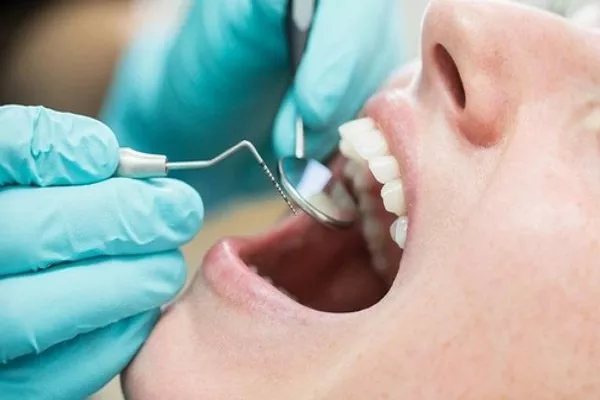Periodontitis is a serious gum disease that affects millions of people worldwide. If left untreated, it can cause irreversible damage to the gums, teeth, and surrounding bone. However, with early detection and proper treatment, periodontitis can be effectively managed. In this article, we will discuss the steps you can take to fix periodontitis gums.
Step 1: See a Periodontist
The first step in treating periodontitis is to see a periodontist, a dentist who specializes in treating gum disease. A periodontist will examine your gums and teeth, and may also take x-rays or other diagnostic tests to determine the extent of the disease. Based on the severity of your periodontitis, the periodontist will recommend a treatment plan that may include one or more of the following options:
- Scaling and Root Planing Scaling and root planing is a non-surgical procedure that involves removing plaque and tartar from below the gum line and smoothing out rough spots on the roots of the teeth. This helps to remove bacteria and prevent further damage to the gums and bone.
- Antibiotics Antibiotics may be prescribed to help control the bacterial infection in the gums. They may be prescribed in the form of pills, mouthwashes, or gels.
- Surgery In some cases, surgery may be necessary to treat periodontitis. This may involve removing damaged tissue, bone grafts to replace lost bone, or even the use of laser therapy to remove infected tissue.
Step 2: Maintain Good Oral Hygiene Habits
Once you have begun treatment for periodontitis, it is important to maintain good oral hygiene habits to prevent further damage to your gums and teeth. This includes:
- Brushing and Flossing Brush your teeth twice a day for at least two minutes, and floss at least once a day to remove plaque and food particles from between your teeth and gums.
- Using a Mouthwash A good mouthwash can help to kill bacteria and freshen your breath. Look for a mouthwash that contains fluoride, which can help to strengthen your teeth.
- Eating a Balanced Diet Eating a balanced diet that is rich in fruits and vegetables, and low in sugar and processed foods, can help to support the health of your gums and teeth.
Step 3: Regular Check-Ups with Your Periodontist
Even after your periodontitis has been successfully treated, it is important to continue seeing your periodontist regularly for check-ups and cleanings. This will help to ensure that your gums and teeth remain healthy, and that any signs of periodontitis are detected early and treated promptly.
Step 4: Consider Lifestyle Changes
In addition to seeing a periodontist, maintaining good oral hygiene, and attending regular check-ups, making lifestyle changes can also help to fix periodontitis gums. Some lifestyle factors that can contribute to periodontitis include smoking, stress, and poor nutrition.
- Quit Smoking Smoking is a major risk factor for periodontitis, as it weakens the immune system and makes it harder for the body to fight off bacterial infections. If you smoke, quitting can help to improve the health of your gums and teeth.
- Manage Stress Stress can weaken the immune system and make it harder for the body to fight off infections. Practicing stress-reducing techniques such as meditation, deep breathing, or yoga can help to improve your overall health and reduce the risk of periodontitis.
- Eat a Healthy Diet Eating a healthy diet that is rich in vitamins and minerals can help to support the health of your gums and teeth. Foods that are high in antioxidants, such as fruits and vegetables, can help to fight off bacterial infections and inflammation in the gums.
- Avoid Sugary and Processed Foods Sugary and processed foods can contribute to the growth of bacteria in the mouth, leading to an increased risk of gum disease. Limiting your intake of these foods can help to improve the health of your gums and teeth.
Conclusion
Periodontitis is a serious gum disease that can cause irreversible damage to the gums, teeth, and bone if left untreated. However, with early detection and proper treatment, it can be effectively managed. The key to fixing periodontitis gums is to see a periodontist, follow a recommended treatment plan, maintain good oral hygiene habits, and continue regular check-ups with your periodontist. By taking these steps, you can help to prevent further damage to your gums and teeth, and maintain a healthy, beautiful smile.
Related Topics:



























